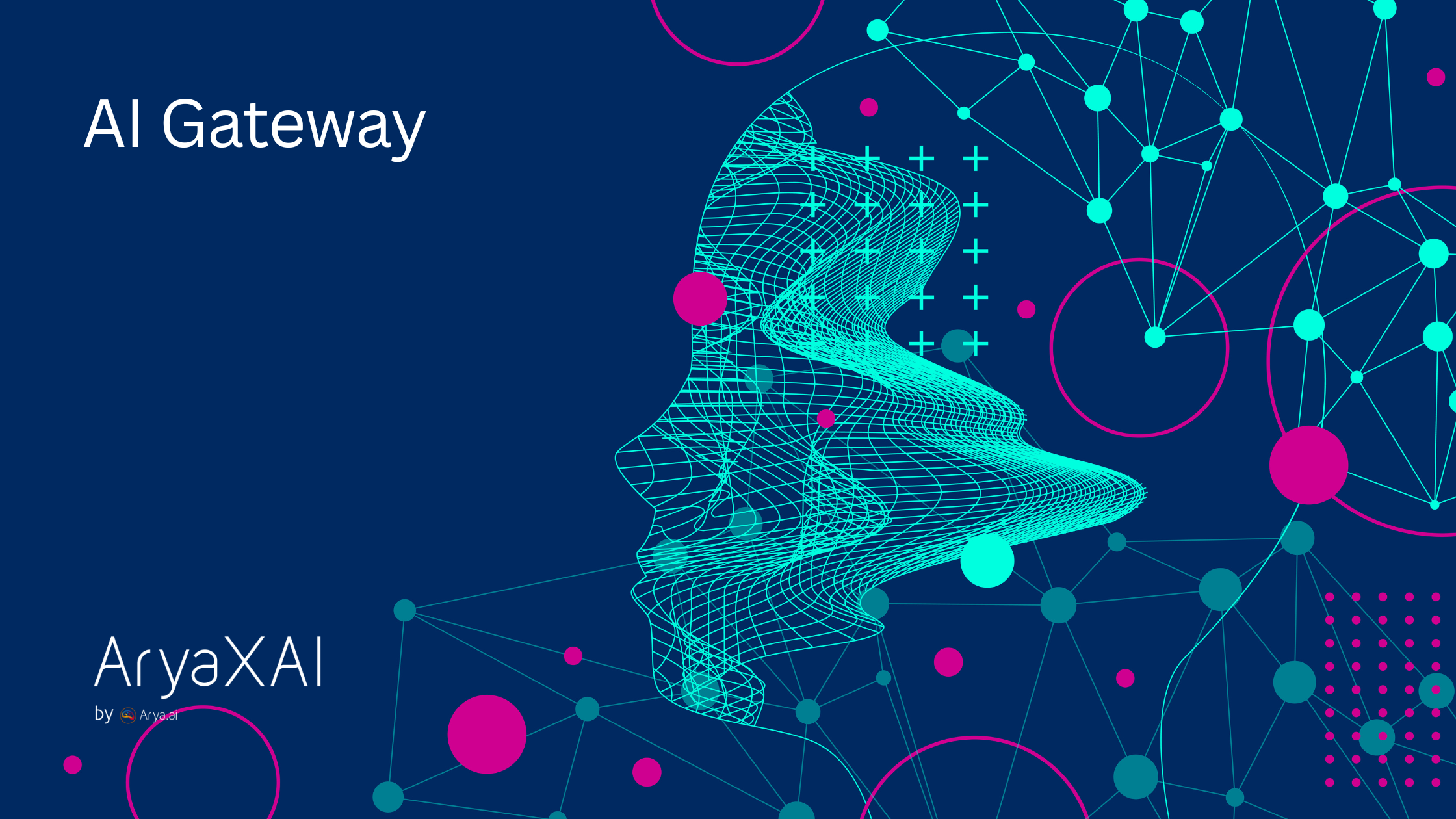Top AI Observability Research Papers - September '25
October 3, 2025

If you’ve been following the rapid transformation of artificial intelligence, you’ve probably noticed a shift from simply building ever‑larger models to making them observable, accountable and fair. September 2025 was a watershed month in this respect, with researchers releasing a slew of top AI research papers focused on runtime monitoring, risk assessment and fairness. In this post we’ll highlight the latest AI research papers dedicated to AI observability, released between September 1 and September 30, 2025.
Why AI Observability Matters?
As AI systems move from lab prototypes to products that influence daily life and mission critical use cases, the need to monitor their behaviour in real time has become pressing. Observability research aims to answer questions like: How do we detect when a model is drifting, hallucinating or discriminating? Can we intervene before harm is done? The latest AI September research papers in this field showcase innovative methods and frameworks that give us deeper insights into these complex systems.
Research Papers Covered
Here’s a list of the research papers covered in this guide:
- Monitoring Machine Learning Systems: A Multivocal Literature Review
- Continuous Monitoring of Large‑Scale Generative AI via Deterministic Knowledge Graphs
- From Judgment to Interference: Early Stopping LLM Harmful Outputs via Streaming Content Monitoring (SCM)
- Algorithmic Fairness: A Runtime Perspective
- Probabilistic Runtime Verification, Evaluation and Risk Assessment of Visual Deep Learning Systems
- Adaptive Monitoring and Real‑World Evaluation of Agentic AI Systems
- Runtime Monitoring of Operational Design Domain to Safeguard Machine Learning Components
- Runtime Monitoring and Enforcement of Conditional Fairness in Generative AIs
- Observability in Large Language Models: A Shift from Training‑Time Evaluation to Real‑Time Monitoring
- Towards Runtime Monitoring for Responsible Machine Learning Using Model‑Driven Engineering
Top Research AI Observability Papers Analysis
Below is our hand‑curated list of the top research AI observability papers published in September 2025. Each summary explains the motivation, methodology and significance of the work, with citations so you can explore further.
1. Monitoring Machine Learning Systems: A Multivocal Literature Review
This comprehensive review examines 136 peer‑reviewed papers and gray literature sources to map the state of ML system monitoring. It organizes findings into four key themes: motivations and goals (why monitoring is needed), monitored aspects (data quality, concept drift, performance, fairness and safety), techniques and metrics (including drift detectors, out‑of‑distribution detectors and explainability tools) and contributions vs. limitations. The authors emphasize that monitoring is a continuous lifecycle activity rather than a one‑time validation.
Beyond summarizing the literature, the review identifies critical gaps. For instance, despite fairness and ethics becoming prominent in AI discourse, only a handful of works address fairness monitoring directly. Standardized metrics and benchmarks remain fragmented, making it hard to compare techniques. The paper thus serves both as an entry point for newcomers and a call to action for researchers to develop unified evaluation standards and address neglected areas like fairness and human‑in‑the‑loop feedback.
2. Continuous Monitoring of Large‑Scale Generative AI via Deterministic Knowledge Graphs
Large language models (LLMs) often hallucinate or subtly drift away from established knowledge. This paper constructs two parallel knowledge graphs (KGs): a deterministic KG populated with ground‑truth facts via explicit rules, and a generative KG built from the LLM’s outputs on the same subject matter. Monitoring involves computing structural metrics—such as the Instantiated Class Ratio (the ratio of instantiated classes in the generative KG to the deterministic KG) and Class Instantiation (the number of instances per class)—and flagging deviations. The authors implement dynamic thresholds that adjust anomaly detection sensitivity over time and release a web‑based demo.
By transforming text into structured knowledge graphs, this approach turns an unstructured monitoring problem into a graph‑comparison task. It is particularly suited for domains where facts and relationships are well‑defined (e.g., encyclopedic knowledge, news events). One limitation is that KG construction may struggle with ambiguous or context‑dependent statements. Nevertheless, the method pushes the boundaries of observability by providing an interpretable, scalable way to compare LLM outputs against known truths.
3. Streaming Content Monitoring for Early Stopping of Harmful LLM Outputs
Large language models can produce toxic or harmful content. Traditional moderation filters operate post‑hoc, meaning harmful text may already be generated or displayed before intervention.
The authors develop a Streaming Content Monitor (SCM) that reads partial outputs from an LLM and predicts whether the continuation will be harmful. Their architecture combines a content classifier trained on the newly assembled FineHarm dataset (containing harmful and benign examples) with a policy network that determines when to stop generation. Impressively, SCM needs to read only about 18 % of the tokens to make an accurate prediction, balancing safety and latency.
Early‑stopping mechanisms are crucial for real‑time applications like chatbots or streaming text services. SCM’s two‑stage approach—classification and policy—reduces harmful output without incurring a noticeable delay. Future work could explore integrating SCM directly into the generation process or expanding the dataset to cover more nuanced harms (e.g., misinformation, hate speech). Its modular design suggests that similar monitors could be trained for other quality attributes such as coherence or style.
4. Algorithmic Fairness: A Runtime Perspective
Fairness in AI is typically assessed on a static dataset. This paper contends that fairness is dynamic—the distribution of inputs and user interactions shifts over time. Using a simple model of coin tosses with evolving biases, the authors formally analyze fairness as a property of sequences and define runtime fairness metrics that adapt as new data arrives.
They explore strategies for monitoring and enforcing fairness conditions in generative AI. Depending on the environment dynamics (e.g., whether biases drift slowly or abruptly), the paper suggests different intervention tactics. For instance, when biases change gradually, continuous monitoring with adjustable thresholds suffices; for abrupt changes, resetting or retraining may be necessary.
Although abstract, this work is foundational: it highlights the need to think about fairness as a process rather than a state. Real systems could map their fairness metrics (e.g., demographic parity) to the coin‑toss analogy. It opens questions about how to balance competing fairness objectives over time and how to decide when interventions should trigger.
5. Probabilistic Runtime Verification and Risk Assessment for Visual Deep Learning Systems
Visual deep learning models achieve impressive performance under controlled conditions, but real‑world deployments often suffer from distributional shifts (e.g., lighting changes, unseen object variants). Standard evaluation metrics cannot account for unknown shifts at runtime.
The authors propose probabilistic runtime verification. They use an out‑of‑distribution detector to partition incoming data into known and unknown regions. For each region, they model the network’s accuracy as a conditional probability and build a binary tree that recursively splits the input space. This probabilistic model is then used to estimate the system’s accuracy on new, potentially shifted inputs. They apply this framework to a medical image segmentation task, showing that it better estimates accuracy under distribution shifts than static evaluations.
By translating runtime verification into a probabilistic risk assessment, the work bridges machine learning and safety engineering. It provides practitioners with quantitative confidence levels and suggests when to trigger fallback mechanisms (e.g., human review). Potential extensions include integrating more sophisticated OOD detectors or exploring other modalities (audio, text).
6. Adaptive Monitoring and Real‑World Evaluation of Agentic AI Systems
Adaptive Multi‑Dimensional Monitoring (AMDM) is a framework to monitor the behaviors of agentic systems in real‑time by fusing heterogeneous metrics. It uses exponentially weighted moving averages to normalize metrics on each axis and applies Mahalanobis distance to detect anomalies in the joint metric space. This methodology ensures that anomalies affecting multiple metrics (e.g., sudden increases in tool‑usage latency and decline in output quality) are detected quickly.
Results: In both simulated environments and real‑world evaluations, AMDM reduces anomaly detection latency from 12.3 s to 5.6 s and cuts false positives from 4.5 % to 0.9 %. The authors also reveal that 83 % of agentic‑system evaluations between 2023–2025 focused only on capability metrics, neglecting user experience and resource usage.
Expert commentary: AMDM demonstrates how classic statistical techniques (EWMA, Mahalanobis distance) can be adapted to high‑dimensional agent monitoring. The results highlight that comprehensive observability can dramatically improve anomaly detection. Future research might integrate domain‑specific metrics or explore reinforcement‑learning‑based anomaly controllers.
7. Runtime Monitoring of Operational Design Domain to Safeguard Machine Learning Components
In autonomous aerial vehicles (e.g., air taxis), machine learning components are used to detect obstacles and humans during critical manoeuvres like landing. A failure here could be catastrophic.
The authors integrate a runtime monitoring system that verifies whether sensory inputs remain within the operational design domain (ODD)—the set of conditions under which the ML model was trained and validated—and whether the model’s outputs satisfy safety properties. If inputs deviate from the ODD (e.g., the camera feed is overexposed) or the model exhibits unexpected behavior, the monitor triggers an alert or fallback procedure.
The notion of an ODD is central to safety certification in autonomous systems. This work operationalizes it for ML components, illustrating how domain knowledge and runtime monitoring can jointly enhance safety. It highlights a key challenge: clearly defining and updating the ODD as systems evolve.
8. Runtime Monitoring and Enforcement of Conditional Fairness in Generative AIs
The authors define conditional fairness, which measures fairness relative to specific context variables (e.g., an output should not discriminate on gender given a certain profession). The paper proposes a monitoring framework that detects when an LLM’s generated output violates these conditional fairness constraints and triggers enforcement
When a violation is imminent, an agent‑based algorithm injects corrective prompts into the generation process to steer the model back to a fair output. The paper leverages combinatorial testing to handle intersectionality—examining combinations of sensitive attributes—and uses fairness metrics such as conditional demographic parity to quantify violations.
This work is notable for turning fairness from a passive metric into an actionable constraint at runtime. However, the enforcement relies on prompt injections, which may become less effective if the model learns to ignore or circumvent them. Long‑term solutions might involve model fine‑tuning or reinforcement learning with fairness rewards. Nevertheless, the paper pioneers a practical approach to fairness monitoring.
9. Observability in Large Language Models: A Shift from Training‑Time Evaluation to Real‑Time Monitoring
This earlier but seminal work argues that evaluating LLMs solely at training time (e.g., cross‑entropy loss, held‑out accuracy) misses critical runtime behaviors like hallucination, semantic drift and harmful outputs. The paper proposes a framework for real‑time observability that monitors model outputs for these issues and collects metrics such as hallucination frequency, response reliability and topic drift over time. It also discusses instrumentation strategies to capture context and reasoning traces.
While the paper predates September 2025, it influenced many subsequent studies. Its call to shift focus from training‑time to runtime evaluation paved the way for frameworks like SCM and knowledge‑graph monitoring. A limitation is that it presents conceptual metrics without providing implementation details, leaving space for later works to operationalize these ideas.
10. Towards Runtime Monitoring for Responsible Machine Learning Using Model‑Driven Engineering
This work bridges model‑driven engineering (MDE) and ML monitoring. The authors design a meta‑model that formally specifies monitoring tasks (e.g., logging features, checking fairness constraints). A model transformation then automatically generates runtime monitors from this meta‑model, integrating them into the application code. The approach emphasises human‑centric requirements—fairness, privacy, interpretability—and treats them as first‑class citizens in the design process.
The paper includes a case study where a predictive system for school admissions is instrumented with generated monitors that track privacy and fairness metrics during operation. The authors show how design‑time assurance alone can miss runtime violations, illustrating the need for dynamic monitoring.
Integrating observability into software engineering practices is critical as ML components become ubiquitous. This work demonstrates that by modelling monitoring requirements explicitly and generating code accordingly, developers can systematically enforce policies. However, the modeler must carefully specify requirements, and handling complex ML pipelines may require further extensions.
Final Thoughts
Observability is no longer an afterthought, it’s a defining feature of modern AI systems. The papers we’ve summarized here - from streaming content monitors and fairness enforcement to knowledge graph comparisons, illustrate a community racing toward more transparent and reliable AI. If you’re hunting for the latest AI research paper in September or want a summary about AI research focusing solely on observability, this list captures the state of the art. Keep these works on your radar as the field continues to evolve.
SHARE THIS
Discover More Articles
Explore a curated collection of in-depth articles covering the latest advancements, insights, and trends in AI, MLOps, governance, and more. Stay informed with expert analyses, thought leadership, and actionable knowledge to drive innovation in your field.

Is Explainability critical for your AI solutions?
Schedule a demo with our team to understand how AryaXAI can make your mission-critical 'AI' acceptable and aligned with all your stakeholders.



.png)



















